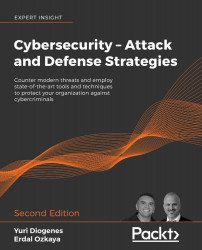Best cyber attack strategies (Red Team)
One of the best ways to secure an organization is to think like a hacker and try to breach into the organization using the same tools and techniques that an adversary would use. The following are the best cyber attack strategies that organizations should consider:
External testing strategies
These strategies involve attempting to breach the organization externally, that is, from outside its network. In this case, cyber attacks will be directed at publicly accessible resources for testing purposes. For instance, the firewall could be targeted via a DDoS attack to make it impossible for legitimate traffic to flow into the organization's network. Email servers are also targeted to try and jam email communication in the organization. Web servers are also targeted to try and find wrongly placed files such as sensitive information stored in publicly accessible folders. Other common targets include the domain name servers and intrusion detection...



